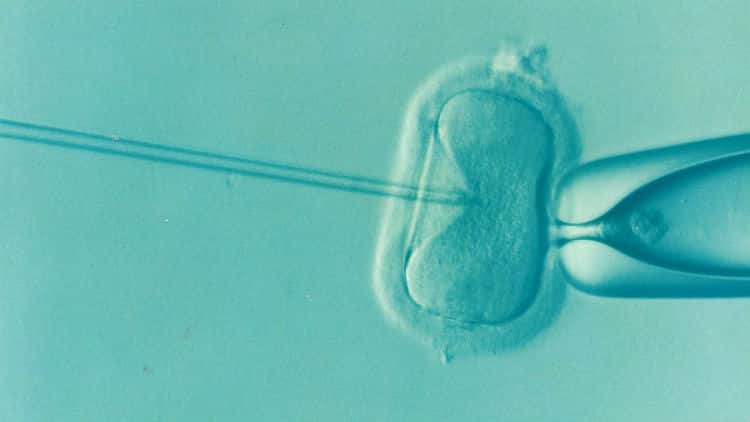The science and technology involved in the field of fertility are advancing quickly. Today, many couples can get different kinds of treatments that allow them to become parents, overcoming or bypassing issues that prevented them from doing so.
In this article:
- Medication to induce ovulation
- Intrauterine Insemination (IUI) (artificial insemination)
- In vitro fertilisation (IVF)
- The stages of IVF
- La médication pour induire l’ovulation
- L’insémination intra-utérine (IIU) (insémination artificielle)
- La fécondation in vitro (FIV)
- Les étapes de la fécondation in vitro (FIV)
Many fertility clinics work with and for couples using personalised treatment plans that vary from case to case. Often involving a multidisciplinary team, these clinics include gynecologists, nurses, nutritionists, psychologists and other professionals. They will work with couples throughout the stages as best they can.
Generally, there are three possible types of treatments, but they do not apply to all couples. Ovarian stimulation, intrauterine insemination (artificial insemination), and in vitro fertilisation are concrete examples of possible treatments. Below I will explain each one.
Medication to Induce Ovulation
The doctor can prescribe a medication that will cause hyperstimulation to promote ovulation.
A milder medication called Clomid (clomiphene citrate) can be prescribed for several days during a specific period during the cycle. It can be repeated for 6-9 cycles. If it fails, the doctor may prescribe a more intense injected medication called gonadotrophin, which will act on the ovary’s follicle maturity to provoke ovulation. They may also combine the two medications for women who don’t ovulate, such as those diagnosed with polycystic ovaries, for example.
Intrauterine Insemination (IUI) (artificial insemination)
Intrauterine insemination is the oldest technique to assist reproduction. It is a simple and pain-free procedure which can make a big difference in a woman’s chances of becoming pregnant. Generally speaking, intrauterine insemination uses the spouse’s sperm, ideally produced the same day as insemination after 3-5 days of abstinence. You can also use sperm extracted directly from the testicle or from a donor.
If you use the spouse’s sperm, the extracted sample will be examined to select and then store the highest quality sperm, which seem to be lively, healthy and mobile. The rest is eliminated to increase the chances of fertilisation. This is called sperm washing, which increases the likelihood of conception. The sperm will be added to a liquid which will be drawn into a syringe with a flexible tube at the end. The tube will be introduced into the uterus, and the full sample will be injected.
This technique bypasses different fertility issues, including sperm quantity or mobility, or can simply be used by a single woman or lesbian couple that wants to have a child using a donor’s sperm.
Intrauterine insemination will take place during a natural ovulation cycle, but the woman needs to be genuinely ovulating and know the exact time to be inseminated to ensure it works. Regular ovulation tests are an excellent way to identify the time of ovulation, and they should be repeated starting from the preovulatory period. You can also monitor the release of the egg by the mature follicle with repeated ultrasounds to optimise the intrauterine insemination process.
If there is a problem associated with ovulation, the doctor can also increase the fertilisation success rate by simultaneously stimulating ovulation with appropriate medication. Often, doctors like to combine medication and sperm washing (more eggs and higher quality sperm) to maximise the chances over a short period. This combination brings together the essential elements required for fertilisation and pregnancy.
Usually, you can attempt intrauterine insemination for up to six cycles, and based on the statistics, 50% of women under 40 will become pregnant during this period. But you should know that IUI success rates diminish with age. The Quebec government will cover the costs of up to nine IUI attempts. If the woman has permeability problems with her fallopian tubes, this technique will likely not succeed after six negative attempts.
Continue reading with In Vitro Fertilisation (IVF).
La suite du billet avec la fécondation in vitro (FIV).


